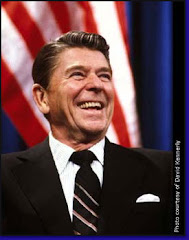Weekly Opinion Editorial
FREE LUNCH
by Steve Fair
Back in 2020, Oklahoma voters narrowly approved Medicaid expansion. The expansion provided health care to around
200,000 previously uninsured low-income adults aged 19-64 whose income was less
than $17,000 a year individually or up to $29,000 for a family of three. Back
then, the federal government was paying 90% of the cost, while the state paid
10%. Supporters of the expansion said Oklahomans
would be fools to turn down ‘free’ money.
But as is often the case, the ‘free’ money the federal government was
supplying to expand Medicaid is being cut.
That cut will put a great deal of pressure on Oklahoma state government. Three observations:
First Medicaid expansion was a short-term solution to a long-term problem.
More than 900,000 Oklahomans- 1 in 4- depend
on Medicaid. Oklahoma is among one of
the unhealthiest states in the U.S. It
is also one of the poorest. Back in 2020, rural health care providers
(hospitals) needed the Medicaid expansion money to help their bleeding bottom
line. The providers and recipients were
willing to take the bait offered by the feds for ‘free’ money, even if they
recognized it was temporary.
According to the Legislative Office of Fiscal Accountability (LOFT), if
the feds stop funding Medicaid expansion, it will cost state taxpayers over
$200 million annually starting next fiscal year. That $200 million has to come from somewhere,
so basic services (public safety, etc.) will likely be impacted.
Second, government should not be in the health care business. Government’s function, according to Article
1, section 8 is to provide for the common defense and general welfare of the
country. Liberals interpret “general welfare”
as the founders endorsing socialized, taxpayer funded health care. While it is true, "general
welfare" has been interpreted to include health care programs, like
Medicare and Medicaid, the Supreme Court has never interpreted it as the U.S. Constitution
explicitly guaranteeing right to health care.
Like pretty much everything else it touches, government involvement in
health care has led to degradation and decay, not discovery and development.
Third, free money doesn’t exist. Somebody
is always paying the bill. Like everything else, taxpayers pay the cost of
Medicaid expansion. Government has no ‘free’
money to give. The only money government
has is what is collected from hard working citizens and then returned less a large
handling fee.
Years ago, bars provided a ‘free’ lunch to patrons who purchased at
least one drink. The ‘free’ food was unusually
high in salt, so the customers would buy more beer. In his book, “There’s no such thing as a
Free Lunch,” economist Milton Friedman points out the patrons were not really
getting a free lunch, but were being duped by the bar. The purchasers all eventually paid for their ‘free’
snack.
Back in 2020, Oklahoma voters-prompted by elected officials and health care providers- prioritized immediate gains over long-term consequences. Just slightly over 50% of voters approved the expansion of Medicaid, but now 100% of Oklahoma taxpayers will pay for that non-existent free lunch.






